Tokyo Jungle Message Board
↕


↕
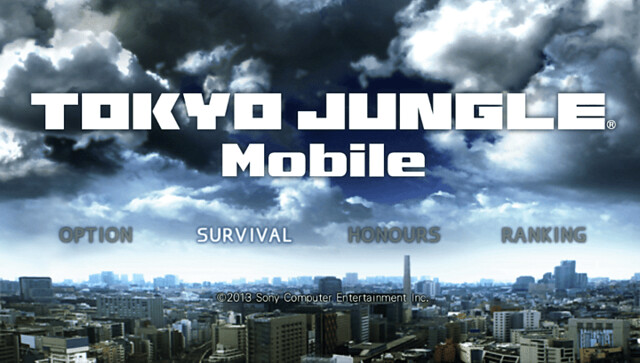

Every Tuesday, there are new games, apps and updates added to PlayStation Mobile. Tokyo Jungle Mobile and MechHit released last night, along with an update to the space strategy game, 0War, and some price changes to a few games.
New Games
Tokyo Jungle Mobile by Sony Computer Entertainment Inc. ($2.99)Set in an alternate Tokyo where mankind has vanished, the animals that remain have to fight to stay alive. There is only one goal, “survival”. Every kind of animal can be found risking its life here, in this struggle for life. Choose your favorite animal out of over 40 available and do everything in your power to survive! The animals’ fight for survival starts now on the PlayStation Mobile!
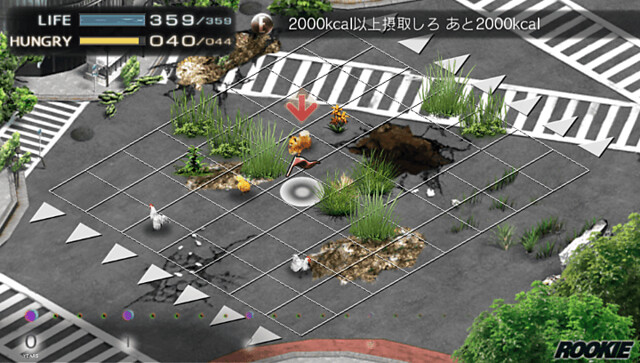
Mech in unmanned space station revolt! Captain, hop into your Core, fly to space and destroy the Mech! Enjoy a whole new experience in classic brick breaker game. Defeat the garrisoned Boss Mech in each level and gain energy. Absorb the energy to develop your Core’s ability. Build up your own Core based on your chosen strategy! MechHit has three major battle fields and 42 levels. After completing all levels, there are difficult mode and survival mode for a challenger’s heart. In survival mode, Boss will continue showing up, challenge your reaction and technique!
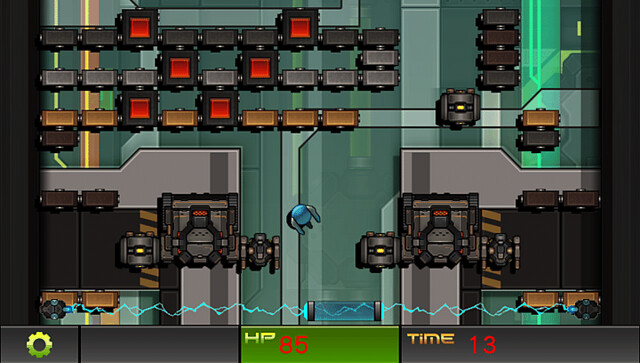
Updates
0WAR by teasoft (Demo Free, Full Game $2.99)
Price Changes
- Radiant Flux (Old $1.79, New $0.99)
- Everybody’s Arcade (Free for demo), Games are purchased separately
- Refreshing! Book Arranging (Old $2.99, New $1.99)
- BLACK JACK (Old $2.99, New $1.99)
- VIDEO POKER (Old $2.99, New $1.99)
- KLONDIKE (Old $2.99, New $1.99)
- Refreshing! Pie-Throwing (Old $2.99, New $1.99)
- Pick 3 Games of your choice Pack (Old $6.99, New $3.99)
- All 5 Games pack (Old $9.99, New $4.99)
PS Vita owners can download these games from the PlayStation Mobile section of PlayStation Store; Owners of PlayStation-certified devices such as the Sony Xperia ZL smartphone, Wikipad or Sony Xperia Z tablet, can obtain them through the PlayStation Mobile Store for the same price.
Click here for a full list of the certified devices or here for installation instructions.

↕

Sony's Creator Audition Mashup Project - or C.A.M.P - called on new Japanese talent to submit innovative game ideas in need of funding. In the absence of longterm financial support, and with no desire to work for someone else, Kataoka and his newly formed studio submitted several game ideas for PlayStation 2, PlayStation Portable and PlayStation 3. "I only created what I wanted to create from the bottom of my heart," he said. (Those ideas are worth their own story, which we'll have for you later.)
Kataoka didn't settle on his "action survival" game of Tokyo Jungle at first. In 2008 his seven-person team released MyStylist, a clothing database and style advice game for PSP. It would presumably frown upon a C.A.M.P. Elvis impersonator.

↕


↕


↕

One way or the other, Tokyo Jungle was destined for success.
It would have earned fans based on its premise alone, in which players control animals released into a post-human apocalypse, and fight for dominance on the streets of Tokyo. But few would have predicted Tokyo Jungle as one of better playing games this year. With its tight, interconnected survival systems and fair but brutal learning curve, Tokyo Jungle is equal parts good and goofy. Read my review for more details on what all that means. In short: it's rad.
Such balance is found everywhere in the game, including its ability to make positively savage confrontations between groups of animals (like a tiny but vicious Pomeranian "attacking" a velociraptor) something you can laugh at, too.
Tokyo Jungle requires careful calculation on the part of the player, with every risky remove having a potential reward...and a potentially swift death.“We needed to represent sweetness and the harsh realities at the same time,” said game director Yohei Kataoka, who prefers to play his game as a pack of predatory chickens, in an email interview.
And though Tokyo Jungle seemingly came out of nowhere here in the United States, it was a quiet three-year collaboration between external developer Crispy’s through PlayStation C.A.M.P. (Creator Audition Mash Up Project). In C.A.M.P., everyday Japanese citizens were allowed to pitch projects to Sony. Tokyo Jungle was one of them, and while 26 developers worked on the game at the height of its development, it started with humbler beginnings: two people.
Tokyo Jungle and Resident Evil 6 were released around the same time in September, and the contrast between the two stuck out like a sore thumb. Resident Evil 6 came across as a game made for all people, aimed at pleasing a worldwide audience, and, thus, lacked a distinct vision. Tokyo Jungle was the opposite. It knew what it was.
“It’s not that we developed this game for Japanese users, but we focused on developing a game that ‘we’ genuinely think is interesting and fun,” said Kataoka. “I believe that this mind-set led to the positive feedback we received from Japan as well as overseas. From the beginning of development, at least at Crispy's, we were never that conscious about the marketing. Of course, we develop games based on what the Japanese users would find fun, so the game may appear more as a novelty for the overseas users, like how the Ukiyo-e [Japanese woodblock paintings] were a long time ago.”
Though Tokyo Jungle was released in Japan on a Blu-ray disc at retail, it started life as a PlayStation Network exclusive, which is how it was eventually released in the rest of the world. Conceived as a downloadable game, however, the game’s scope was understandably limited, which is what originally lead the game to be side-scrolling in nature. That earlier version of Tokyo Jungle was shown at Tokyo Game Show 2010, and got a huge reaction.
“As we did not have much budget allocated for this project, we tried to develop a 2D scrolling action game to keep the budget under control, but the replayable gameplay did not work so well,” said Kataoka.
Tokyo Jungle is an example of a game where the reaction shifted the game design. Positive responses from players and media exposed to Tokyo Jungle (I remember 8-4 Play really getting behind it early) prompted Sony to appropriate a bigger budget to it, and Kataoka’s team was able to build a fully 3D space for players and animals to run around in.
Coming to grips with Tokyo Jungle’s first few hours can be brutal. It’s not an easy game, but it’s one that rewards players who patiently learn its systems. Even then, success is not guaranteed. Kataoka cited a surprising influence on Tokyo Jungle: Capcom’s Steel Battalion. The original one, mind you, not the abomination made for Kinect.
“This game utilizes more than 40 buttons to operate a vertical tank to battle and when you fail to push the escape button when trying to escape the tank, all your save data gets deleted,” he said. “I was very impressed with its concept of going above and beyond the traditional life-and-death perspective in video games. Now that I think about it, I believe this concept of ‘death equals the end’ contributed to the game characteristic of Tokyo Jungle.”
(I had to ask Kataoka about the game’s ending, so prepare for spoilers, Tokyo Jungle newcomers.)
Even though it ruins some of the surprise, I’ve felt compelled to inform people Tokyo Jungle has a narrative justification for its madness, including why dinosaurs are running around. Though survival mode is where the meat of the game is, there’s a story mode unlocked by picking up collectibles. Tokyo Jungle's current lack of men and women involves time manipulation, mass discrepancies across time and space, and stupid, stupid humans.
Crispy’s didn’t start developing the explanation until after the game’s systems were in place, but it’s a piece of the Tokyo Jungle puzzle, one that weaves a dark tale, and Kataoka clearly took it seriously.
In this ending, you've chosen to let humanity rot in another time period, and the animals reign.There are two possible endings in Tokyo Jungle. Upon learning humanity has abandoned the current time period, robotic dogs left by the humans are tasked with bringing them back. You don’t have to. If you choose to bring the humans back (the “bad” ending), the game fades to black. If you choose to leave them stranded in another time, it’s unclear what happens to the humans, and animals are Earth's master. It’s not really evident what happens, and Kataoka didn’t exactly jump at the chance to make it clearer.
“We decided to not leave a specific message and focused on natural providence,” he said. “If the population keeps increasing at the current pace, we imagined that it will be impossible for everyone to have a prosperous life with the current civilization level, in the First World countries. In both endings, we depicted our imagination of the future into the game.”
He did speculate on what might have happened to the stranded humans in the “good” ending, though.
“Hmmm,” he said. “I'm not sure. However, I will imagine that if they survive, they will live on making mistakes.”
Dark.
And what about a sequel, you ask? It hasn't been ruled out, but it's too early to say.

↕


↕
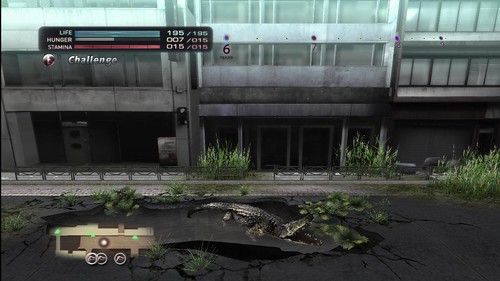
It’s been two weeks since we released TOKYO JUNGLE and we‘re thrilled with the comments we’ve received from players. Thanks to everyone who is enjoying the game!
Today, we are releasing four additional animal characters (Crocodile, Giraffe, Kangaroo, Panda) and giving away more costumes, so please be sure to check out PlayStation Store this afternoon.
In other news, we’ve received many questions about TOKYO JUNGLE’s premise and gameplay, so we asked Game Director Yohei Kataoka from Crispy’s and Producer Masaaki Yamagiwa from Japan Studio to elaborate on the game’s concept and inception.

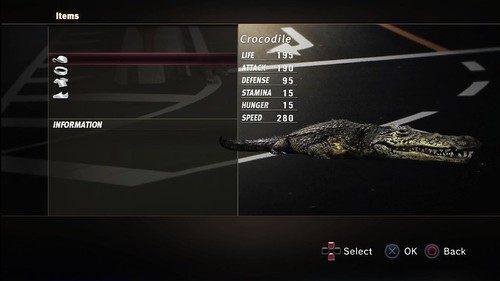
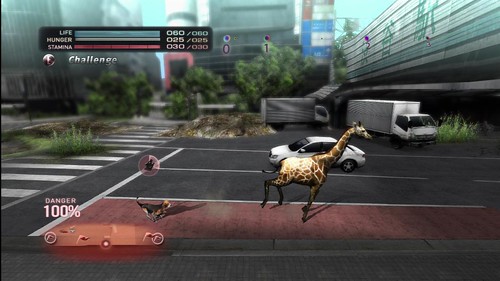
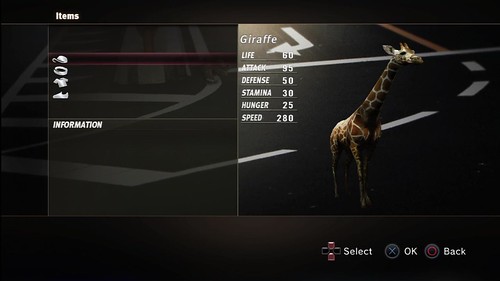
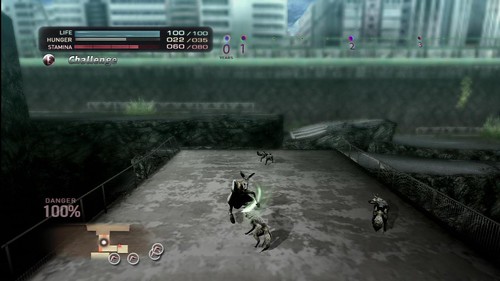
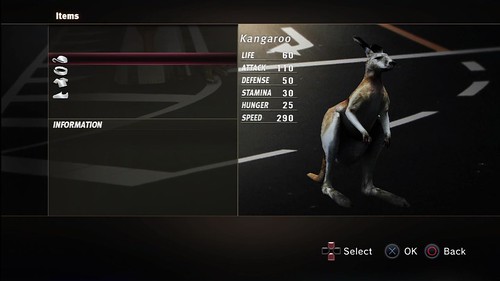
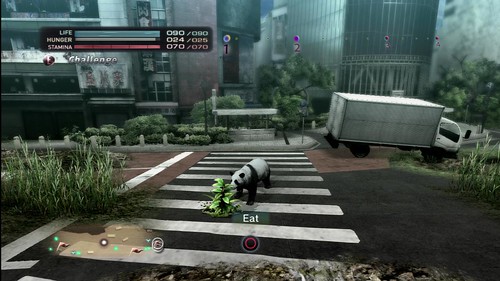
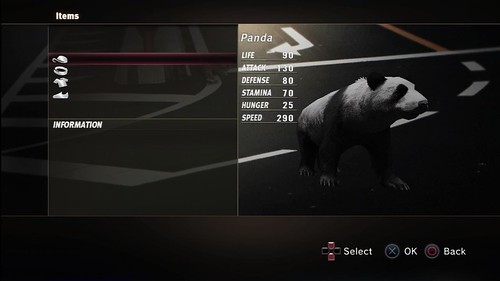
Dais Kawaguchi, Assistant Producer: Can you please explain how you came up with the idea for TOKYO JUNGLE?
Yohei Kataoka, Game Director: The business philosophy for “Crispy’s Corporation,” the studio I established, is to “develop a new product that nobody has ever seen before.”
However, just because it’s new doesn’t mean it will be well received. When I was struggling to figure out how to create something that’s innovative and compelling, I came across an article of famous singer-songwriters in Japan and how they conceive their inspirations when creating lyrics. The method was to first come up with the “nouns” and “adjectives” separately, and then combining them later to create the song titles and lyrics.
For example, you have an adjective, “long,” and a noun, “cat.” Everybody is familiar with each of these words, but when you combine them, you will get, “Long Cat,” which is strange but catchy. When I read that article, I had a theory. If we combine a “common theme” and another “common theme,” would it become something unique and catchy? That’s how it came about.
Just making something new will not sell. I believed that in order to successfully sell a new title, we need to present something new, and something that everybody likes (something catchy). So, we came up with the following combinations: “Animals,” which are in common existence and something that most people like.
Plus, “a city where humans have disappeared,” a popular science fiction theme.
By combining these two themes, we believed that we could create an innovative and universally appealing new game IP.
DK: TOKYO JUNGLE is so unique. What was the most entertaining part about making the game?
YK: The background images are made by processing photo images, and the photo shooting was quite a handful. If there were people in the photo images, we needed to edit them out, so we chose to shoot at dawn when there aren’t any people.
We took the photos by standing on top of the center divider, in the middle of the street, taking side steps as we took photos, one shot per step… we looked like complete psychopaths out there (lol). We took over 500 shots, per photo session and ended up with tens of thousands of pictures.
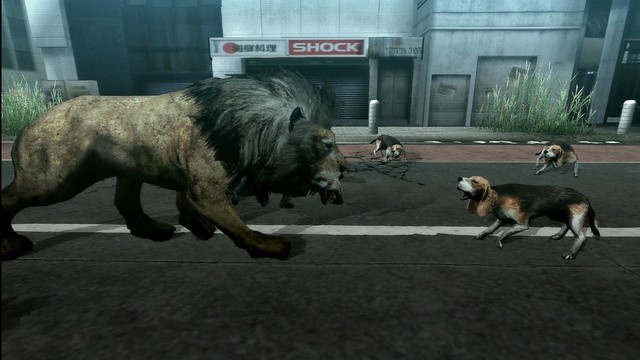
DK: Are you nervous about the reaction over in the United States? Do you think the game will translate here?
Masaaki Yamagiwa, Producer: When we saw the smile on everyone’s face when we showcased TOKYO JUNGLE at E3 and Gamescom, we were convinced that it will be accepted overseas as well. Please enjoy TOKYO JUNGLE, a game where we strived to embrace Japanese uniqueness.
How many playable animal characters are there as in the U.S. version? Will you have the same downloadable animal feature?
MY: There will be 52 types of characters available and yes, all the animals available in the Japanese version will be available in the US version.
Are there any animals that you wish you could have included in the game?
YK: I wanted to have a T-Rex because I love monster movies like Godzilla. Our prototype actually had a stage where a T-Rex crashes through the freeway and chases animals.
I know this is a silly question, but if you were an animal in the game which one would you be?
YK: I think it’s important not to get hunted, so a hippopotamus (LOL). In real life and in game, hippos are very strong, so be careful!
MY: Baby chick… because when we announced TOKYO JUNGLE in Japan, the Baby Chick was just as popular as the Pomeranian. (LOL)

↕


↕

Tokyo Jungle is so much more than a “wacky game from Japan.” It would be easy to enjoy Tokyo Jungle ironically, but the reason I’ve sunk more than 15 hours into a dog-on-cat-on-dinosaur-on-hippo world where humanity no longer exists is because Tokyo Jungle also happens to be a good game.
Though traditional roguelike fans may bristle at the comparison, it’s the easiest shorthand to explain the game’s central gameplay loop, the survival mode. Players are dropped in, and do as the mode suggests: stay alive. Besides just living longer, there are various challenges to keep you motivated, from consuming a set amount of calories to taking over a location by marking various spots. These sessions last anywhere from 15-to-30 minutes, since the game will inevitably spawn a supremely powerful beast into the world, who will totally wreck you. Plus, since the challenges aren't that varied, I often found myself playing only as far as unlocking the next animal before purposely dying. You can, however, save instead of mating and come back if you're having a good run.
Unlocking the animals is the real hook here, since so many of ‘em play differently. An enormous list of animals greets you at the start, though most are locked away, requiring completion of animal-specific challenges. The animals are divided into two types--herbivore, carnivore--and require two different playstyles for success. Carnivores are stronger, combat-reliant animals, and you’ll need to become intimately familiar with the elegant counterattack system to survive. Herbivores want to avoid combat all costs, and must use their double jump ability to reach out-of-place environmental structures to slink around. The differing styles helps keep the gameplay fresh, a feeling compounded by random events that trigger each time you play. Sometimes a location will become poisoned, sometimes food will disappear, sometimes rain will obscure your vision, and sometimes all of those will happen at once, and turn a great run into an utter disaster. You’re balancing these random elements against other competing factors, including the 15-year lifespan of your animal, which forces you to mate and produce offspring, and having to constantly eat to avoid starving.
Can't blame these felines for wanting to protect themselves.One advantage you do have is loot. Yeah, loot. Boxes will randomly appear in the world with items helpful for the moment (flea shampoo to remove fleas, which slow you down, or pet medicine to restore your life), and gear to boost various stats (my favorite is the hip-hop shirt that improves attack) or provide unique benefits (a headlamp to see further in the dark). The name, look, and description of items are hysterical, but the big problem is that loot doesn’t show up nearly enough. I’d sometimes go two or three runs without a new piece of gear, and there’s a ton of gear in this game, according to the in-game store. And since most of my time in Tokyo Jungle was simply spent playing just long enough to unlock the next animal, the gear didn’t really provide much of an advantage. Players looking to survive for 50 or 75 years, a requirement for some of the harder trophies, will probably get much more out of it.
There is also a story mode in Tokyo Jungle, and it’s where the game gets even weirder, if you can believe it. Collecting three story drops in the survival mode will unlock diary entries that help explain what happened to mankind. The story mode begins as a series of short tales about the various animal factions interacting with one another, while eventually coughing up a direct explanation for Tokyo Jungle’s whole premise. By the end of the story, you will have a pretty cool, totally insane narrative justification for why there are dinosaurs running around Shinjuku. That Tokyo Jungle even has an explanation for itself is impressive enough, and for it to make enough sense to go “oh, yeah, sure” is even better. It’s too bad the rad creatures that unlock as a consequence of finishing the story are so damn expensive, and there’s no way to earn enough points to unlock them without seriously grinding.
I also take issue with the game locking some of its animals, like the sabertooth and alligator, as downloadable content on PlayStation Network. It’s one thing if Sony wants players to purchase crazy, one-off creatures as additional purchases, but part of the Tokyo Jungle addiction is coming across something crazy on a run, and knowing you’ll eventually be able to patrol the streets as that bad ass. Granted, Tokyo Jungle was a retail product in Japan and it’s just $15 over here as a download, but it’s still poor form, and there are better ways of teasing the player to pay a little more. That said, there are plenty of animals for you to unlock, and 15 hours later, I still don't have access to the dinosaurs.
A touching moment in the story mode, a bond across clans.There are so many other little details that make Tokyo Jungle such a humorous, surprising delight, too. When a set of animals are about to mate, the game fades to black...and the controller rumbles. When you play as a baby chick, there’s no way to mate, because you need to fall asleep...and wake up as a chicken. When the Tosa clan has been battered, beaten, and removed from their home, only to be saved by a compassionate bear who...talks to you. Talks! When you’re presented with a stark morality choice at the end that, no matter what you choose, ends the game on a supremely dark note, you can't help but applaud the game's sheer audacity.
Tokyo Jungle is bold, well-designed, and very funny. One can’t imagine Tokyo Jungle coming from anywhere but Japan, and it’s a case where such a statement is an enormous compliment.

↕


This week saw the keenly anticipated digital release of one of the most off-the-wall games you’ll play this year – Sony Japan Studio’s lunatic action title TOKYO JUNGLE.
For the uninitiated, it plays out in a post-apocalyptic vision of Japan’s sprawling metropolis where humans are extinct and the streets are fought over by gangs of animals. At its core, it’s a survival game that lets you answer that rarely posed question: what would happen if a gang of Pomeranians went toe-to-toe with a velociraptor, while a posse of baby chickens waited in the wings ready peck the victor to death? It’s mad as a proverbial badger, but it’s immensely enjoyable to play.
A quick viewing of the game’s eye-popping launch trailer below should raise all manner of queries – principally, ‘Why?. So, PlayStation.Blog caught up with the game’s director Yohei Kataoka in Tokyo last week in the hope of getting a few answers.
PlayStation.Blog: First and foremost, what possessed you to make a game in which you can pit a house cat against a panda bear in a brutal fight to the death?
Yohei Kataoka: In Japan it’s always been a universal concept of having a world without humans. And animals are also kind of a universal concept. So both of these concepts are quite popular, but I felt that if we could combine these two ideas it could result in something very catchy, very new and very exciting.
PSB: What was Sony Japan Studio’s initial response when you pitched the concept?
Yohei Kataoka: It was bad! Initially! It wasn’t received so well at the very beginning. I think there weren’t so many people that thought this game would sell just based on the concept, but as the game started to take form there was good user reaction and feedback.

PSB: Were you surprised at how enthusiastically your TGS 2010 reveal was received in Europe?
Yohei Kataoka: When we started to show the game in Europe, we saw that there was a good response and reaction and that actually in some respects pushed forward the development of the game. Like any other project, it might just have stopped with a Japanese release, or depending on how gamers and media reacted, it may actually have stopped development all together. But we had an opportunity to show the videos to Europe and US audiences and the European audience thought it was hilarious. So maybe there is something more similar in the sensibilities of Europeans and the Japanese. We thought we’d be able to release in Japan and Europe but we weren’t so sure about the US. But we got help and we’re now able to release there as well.
PSB: Were you frustrated that much of the coverage of the game has focussed on how eccentric the concept is, rather than the gameplay itself?
Yohei Kataoka: We wanted that hook, first of all, to get the attention. Then, as people played it and gathered more information they would find out that it’s a real game with substance. So we took time to make sure that was there – the substance – and took time to tune the gameplay.
Initially when [Sony Worldwide Studios president] Yoshida-san said that he didn’t necessarily have a positive view of the project, he explained there was a catchiness to the concept but the gameplay itself wasn’t at the same level. So we had to take some time to bring that up to the same level. That’s why it took some time from Tokyo Game Show 2010 for these adjustments to take place.

PSB: How difficult is it to balance the gameplay when you have chickens fighting polar bears?
Yohei Kataoka: The point of the game is not to fight and win against whatever animal you’re against. The point of the game is to survive as long as you can. So a baby chicken and a polar bear have their own survival methods – there are different skill sets needed for different animals.
PSB: Did you manage to squeeze your own pets into the game?
Yohei Kataoka: I only have a cat – but yes, it’s in the game!
A quick final word for Plus members. You can claim 20% off the standard $14.99 price tag for the first two weeks on release, and get four DLC animals for free for one week.


↕
For those who have been patiently waiting for TOKYO JUNGLE’S western release, I’m happy to announce that it will finally be available on PSN today for $14.99! We are also releasing DLC animals, a PS3 dynamic theme and free costumes so please make sure to check them out.
I’ve got great news for PlayStation Plus members: You’ll be able to get TOKYO JUNGLE at a 20% discount for two weeks (until October 9th)! In addition, we are giving away four DLC animals for free! These animals will only be free for one week (until October 2nd), so don’t miss out!

↕

That's one of them, anyway. It'll be $11.99 for Plus users when it comes out tomorrow, and $14.99 for everyone else. Tokyo Jungle will be subject to the same discount, while Starhawk's single-player component will be subject to an even more significant discount.
Along with the single-player DLC, the Starhawk campaign is free on PSN for Plus members. Now you know what to play next after your surprise downloads of Borderlands, Scott Pilgrim, and Double Dragon Neon.

↕


↕

As long as you keep that content warning in mind, I can't recommend Tokyo Jungle enough. The violence shouldn't have been surprising, but the clever structure of the game is a well-earned surprise.

↕


↕

Is it possible for a game to be simultaneously "charmingly wacky" and "gruesome?" See for yourself in the latest trailer for Tokyo Jungle, which launches on PSN in North America on September 25.

↕
In a move that was inevitable for a company with any sense of decency, Sony’s announced the, um, eccentric Tokyo Jungle is coming to PlayStation Network on September 25 for just $14.99.
Tokyo Jungle has players fighting up the food-chain in post-apocalyptic Tokyo, a game that’s become a humorous rallying cry from players in search of the strangest of the strange. Well, we're getting it.
The game’s already received downloadable content in Japan, which Sony teased in the comments announcing the game on the PlayStation Blog.
“Stay tuned as we plan to have more information soon,” said assistant producer Dais Kawaguchi.
I’ve already marked my calendar.

↕

Sony only kind of announced Tokyo Jungle for North America at E3, but now we have an official release date for the animal survival adventure: September 25. The price is $14.99, which is much, much cheaper than the ¥3,900 ($49) asking price in Japan.
In case you missed our coverage, Tokyo Jungle is an oddly fascinating game in which you control one of 50 different animals - ranging from a chick to a dinosaur - trying to survive, find food, and mate in a ruined, post-apocalyptic Tokyo. A story mode takes you through the lives of a set of animals "whose lives are intertwined as they struggle to survive in the Tokyo wilderness, while unraveling the mystery of mankind's disappearance." In Survival Mode, you stay alive for as many generations as you can, hunting (or foraging), claiming territory, and avoiding larger predators.

↕

You may have caught wind of this one-of-a-kind title’s release in Japan or heard whispers of it this past E3, but we’re excited to finally announce that Tokyo Jungle will be coming to PS3 via PSN very shortly — on September 25th, to be exact!

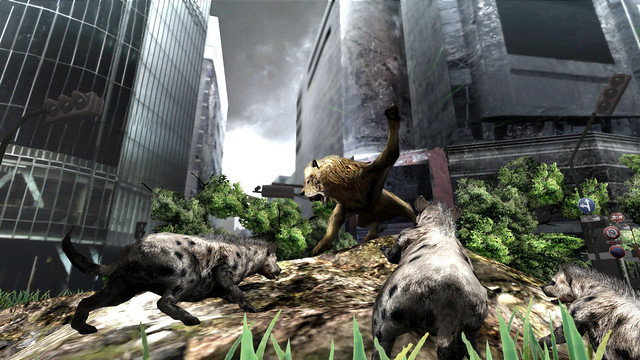
Developed by PlayStation C.A.M.P and Crispy’s, Tokyo Jungle is an action-adventure game set in a post-apocalyptic Japan, where humankind no longer exists and animals must ruthlessly fight for their lives. In this world, there’s just one rule — only the strong survive!
Tokyo Jungle puts you in the shoes (paws?) of over 50 playable animals ranging from Pomeranians to Lions. Playing your animal of choice, unleash your inner beast to hunt your way to the top of Tokyo’s post-apocalyptic food chain.
There are two game modes: in Story Mode, you’ll play as a range of different animals whose lives are intertwined as they struggle to survive in the Tokyo wilderness, while unraveling the mystery of mankind’s disappearance. In Survival Mode, you will hunt, occupy territories, and produce offspring to secure future generations and resist extinction. As you progress, you’ll also obtain survival points to unlock playable animals and purchase costumes to increase your abilities.


Whether in Story or Survival Mode, you never know where your next meal will come from or the dangers you’ll face in this concrete jungle, so be prepared for anything and everything when Tokyo Jungle hits PlayStation Network on September 25th for $14.99.

↕

Considering that things like marking your territory, finding a nest, and mating are part of the basic gameplay of Tokyo Jungle ... this DLC's going to be pretty entertaining, in a potentially horrifying way.

↕


↕


↕


↕


↕
Finally, I got a Twitter report that led me to the right place: Sony Computer Entertainment Europe's private meeting room. And there I finally found a single Tokyo Jungle demo station, with the localized European version (it's also due for North America, Joystiq has learned.)
This story would be a lot less inspiring and a lot more embarrassing if the demo turned out to be the quirky, but otherwise unremarkable, game I feared it would be. However, it's a clever, exciting, and, yes, intensely quirky game. It was worth the hunt.

↕


↕

Even in the apocalypse, love can blossom. Take the pomeranian in this long Tokyo Jungle clip, for example. After foraging for food, he finds a mate and then - well, we're a family friendly website. If you haven't had "the talk" with your folks, you may want to do that before watching this.






